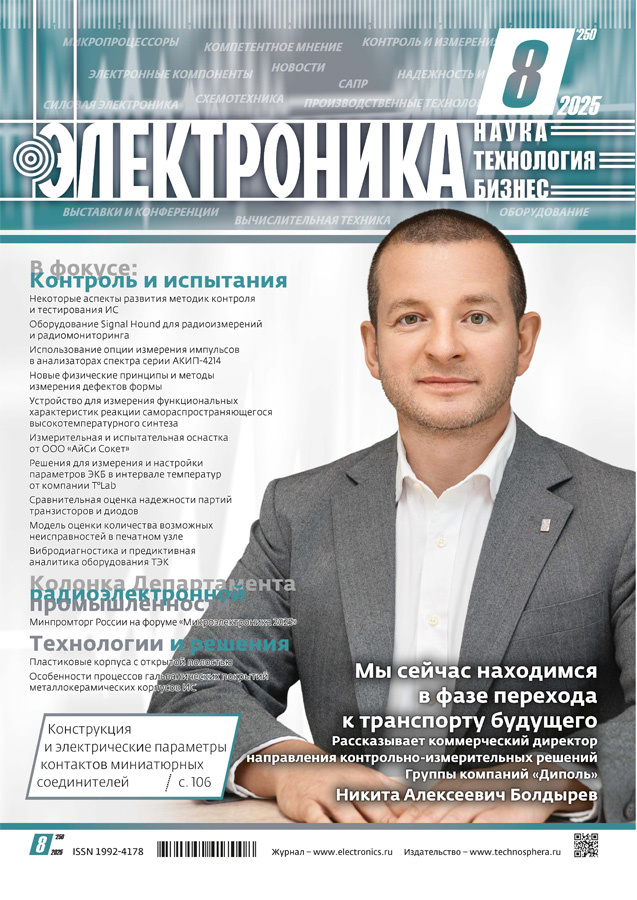Miniature connector contacts: design and electrical parameters
- Authors: Popov M.1, Bakanin D.1
-
Affiliations:
- АО «РАДИАНТ-ЭК»
- Issue: No 8 (2025)
- Pages: 106-112
- Section: Electromechanical Components
- URL: https://journals.eco-vector.com/1992-4178/article/view/695978
- DOI: https://doi.org/10.22184/1992-4178.2025.250.8.106.112
- ID: 695978
Cite item
Abstract
The article examines the design features and electrical parameters of miniature connector contacts with a pitch smaller than 1.3 mm. It demonstrates that a promising design is the twist pin contact with seven contact points, providing low contact resistance and high wear resistance.
Keywords
Full Text
About the authors
M. Popov
АО «РАДИАНТ-ЭК»
Author for correspondence.
Email: m.popov@ranet.ru
заместитель начальника конструкторско-технологического отдела
Russian Federation, МоскваD. Bakanin
АО «РАДИАНТ-ЭК»
Email: d.bakanin@ranet.ru
начальник конструкторско-технологического отдела
Russian Federation, МоскваReferences
- Хольм Р. Электрические контакты. М.: Издательство иностранной литературы. 1961.
- Белоусов А.К., Савченко В.С. Электрические разъемные контакты в радиоэлектронной аппаратуре. М.: Энергия. 1967.
- Левин А.П. Контакты электрических соединителей радиоэлектронной аппаратуры. М.: Советское радио, 1972.
- Сафонов А.Л., Сафонов Л.И. Электрические прямоугольные соединители. Анализ физических процессов в контактах // Технологии в электронной промышленности. 2007. № 6.
- Сафонов А.Л., Сафонов Л.И. Радиочастотные электрические соединители. Вопросы теории и состояние развития производства // Технологии в электронной промышленности. 2010. № 5.
- ESCC Detail Specification No. 3401/078. Issue 8. 2024.
- Баканин Д., Шаломанов В. Отечественный модульный высокоскоростной соединитель стандарта VPX (VITA 46) от АО «РАДИАНТ-ЭК» // Электронные компоненты. 2023. № 2. С. 56–59.
Supplementary files
Supplementary Files
Action
1.
JATS XML
Download (35KB)
3.
Fig. 2. Twist Pin contact with seven contact points: a – general view; b – barrel section; c – crimping section
Download (100KB)
4.
Fig. 3. Flex Pin contact pin with four contact points: a – general view; b – cross-section of the lamellas
Download (76KB)
5.
Fig. 4. Stamped Pin contact with three contact points: a – general view; b – cross-section of the lamellas
Download (80KB)
6.
Fig. 5. Contact-socket manufactured by stamping: a – sockets on tape; b – gap on the cylindrical part of the socket
Download (45KB)
7.
Fig. 6. Comparison of contact crimping: on the left – fixation of the tail (terminal) using spot welding; on the right – radial cross-shaped crimping with full coverage of the conductor
Download (73KB)
Download (202KB)
Download (58KB)
10.
Fig. 9. Model of the contact surface by R. Holm: a – areas with metallic contact; b – areas with quasi-metallic conductivity; c – non-conducting areas; d – non-contacting areas
Download (61KB)
Download (53KB)


















